Original Title: "Crypto Market Sentiment Warms Up, MCP Becomes New Benchmark in AI Track | Frontier Lab Crypto Market Weekly Report"
Original Source: Frontier Lab
Market Overview
Overall Market Situation
This week, the cryptocurrency market is on an upward trend, with the overall market and the vast majority of altcoins showing an upward movement. The recently sluggish market sentiment has significantly eased, with the market sentiment index rising from 55% to 79%, entering a bullish zone overall. The market capitalization of stablecoins continues to rise, extending the upward trend that began last week (USDT reached 145.7 billion, USDC reached 61.9 billion, with increases of 0.62% and 2.32% respectively), indicating that institutional funds are increasing their entry, primarily driven by the growth of U.S. funds. It can be seen that this week's upward trend has greatly boosted the sentiment of U.S. investors, who are beginning to accelerate their entry.
The upward trend this week is mainly influenced by the easing of the U.S. tariff policy towards China, Trump's declaration that he does not intend to fire Federal Reserve Chairman Powell, and the new SEC Chairman Paul Atkins taking office with a friendly attitude towards the crypto industry, which has promoted a significant rebound in the market this week. However, the market still faces uncertainties regarding the impending economic recession and tariffs in the U.S., so this week's rise can only be seen as a rebound from the previous excessive decline, and cannot yet be regarded as a reversal of the market trend.
Next Week's Predictions
Bullish Targets: SOL, SNX
SOL: Comprehensive Recovery of the Solana Ecosystem, the Rise of Meme Tokens, Stablecoins, and Decentralized Trading Platforms Driving Market Recovery
Meme Token Market Recovery
This week, as the market sentiment warms up, the trading volume of meme tokens on the Solana chain has significantly increased. The number of meme tokens purchased continues to exceed the number sold, driving a rapid recovery of data on the Solana chain. This indicates that despite the previous retreat of the meme wave causing losses for on-chain users, investors' interest in meme tokens remains strong. Additionally, after Pump.fun launched PumpSwap, the daily trading volume of PumpSwap has gradually increased, maintaining between 300 million to 480 million dollars, accounting for 9% to 19% of the DEX trading volume on the Solana chain, indicating that the meme market is gradually warming up. The activity in the meme token market helps to boost the price of SOL in the short term.

Trading situation of meme tokens on the Solana chain (Data Source: https://dune.com/pseudocode88_aux/solana-meme-token-analysis)
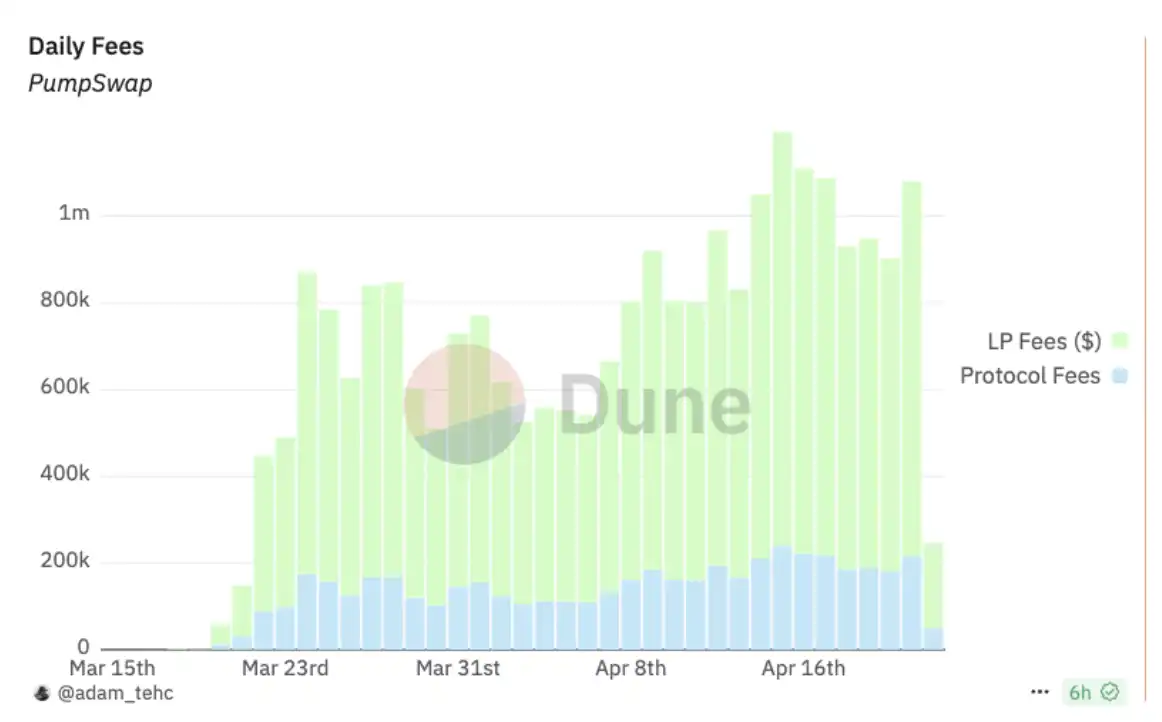
Daily trading volume of PumpSwap (Data Source: https://dune.com/pseudocode88_aux/solana-meme-token-analysis)
On-Chain Stablecoin Supply Growth
The supply of stablecoins on the Solana chain continues to grow rapidly, currently surpassing 12.8 billion dollars, setting a new historical high. This growth reflects investors' confidence in the Solana ecosystem and the demand for on-chain liquidity support. The ample supply of stablecoins provides important liquidity support for financial activities on the Solana chain, promoting the development of the on-chain ecosystem. This liquidity not only enhances the activity of on-chain transactions but also provides investors with more trading and investment opportunities.
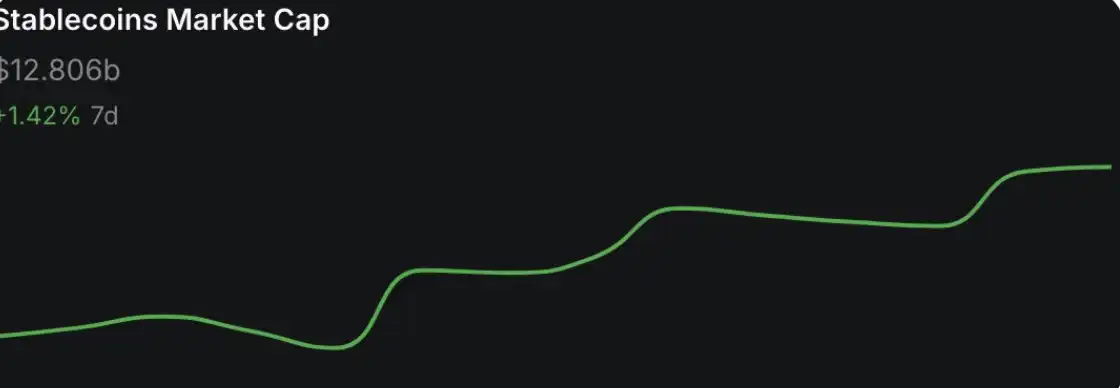
Status of stablecoins on the Solana chain (Data Source: https://defillama.com/chain/solana)
Growth of DEX Trading Volume on Solana
The decentralized trading platforms (DEX) on the Solana chain have seen trading volumes exceed 3.5 billion dollars in the past 24 hours, indicating a recovery in on-chain activity. The supply of stablecoins is also continuing to grow, recently surpassing 18.2 billion dollars. This reflects investors' confidence in the Solana ecosystem and provides more liquidity support on-chain.
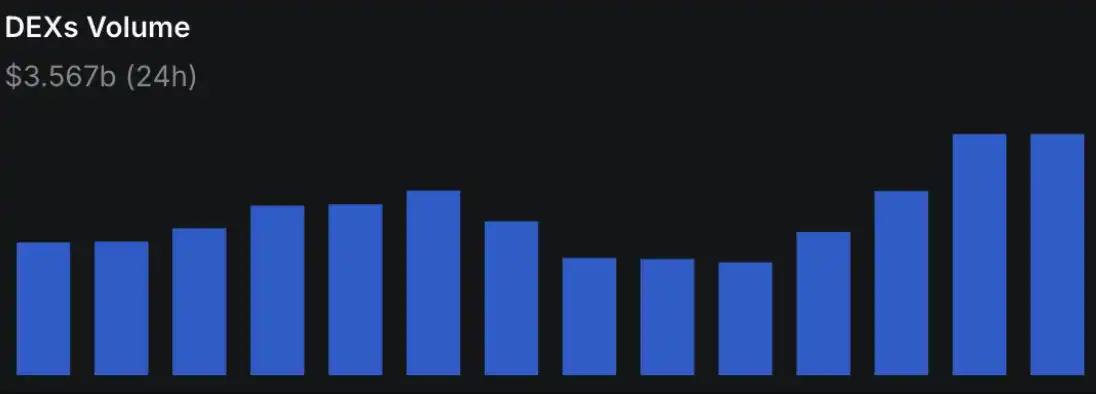
DEX trading volume on the Solana chain (Data Source: https://defillama.com/chain/solana)
Solana's Decentralization Policy
The Solana Foundation has launched a new policy to strengthen decentralization. For newly added validators in its delegation program, if certain validators have been qualified to receive Solana Foundation delegation for at least 18 months on the mainnet and have less than 1000 SOL staked outside of the foundation's delegation, three of them will be removed. This policy aims to reduce reliance on foundation delegation and encourage community-supported validators.
Institutional Companies Increasing Holdings
Canadian listed investment company SOL Strategies has issued 500 million dollars in convertible bonds to purchase and stake SOL. After SOL Strategies announced this news, its stock price rose by 23.5%. SOL Strategies intends to learn from Michael Saylor's MicroStrategy, continuously issuing convertible corporate bonds to increase BTC holdings, aiming to boost its stock price. If successful, this move by SOL Strategies will provide substantial support and benefits for the price of SOL. Additionally, a recent emerging trend is that traditional companies are gradually starting to increase their holdings of SOL through various means.
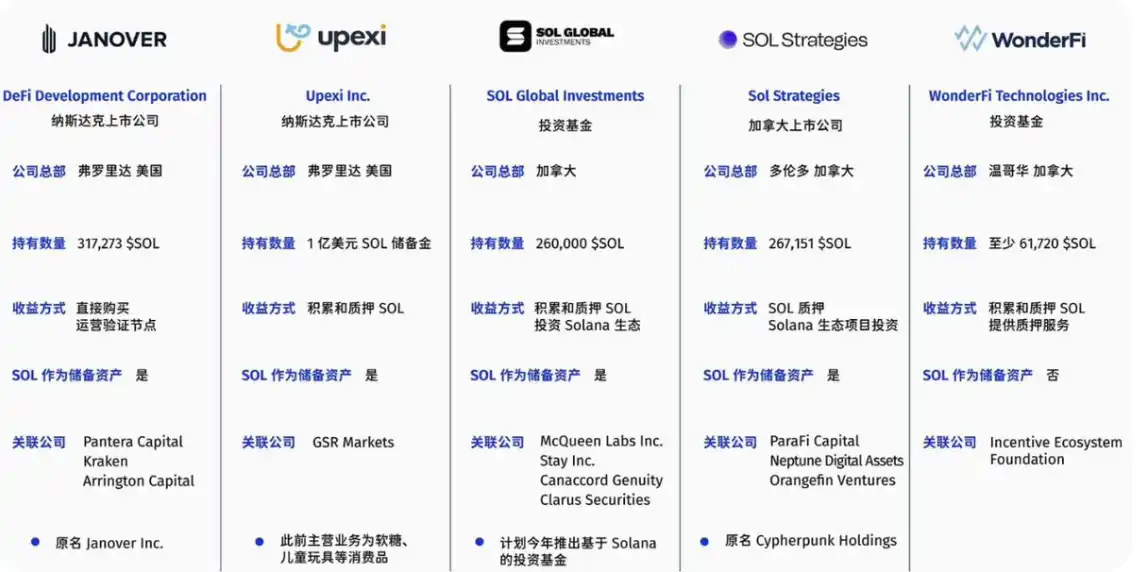
Positive News for SOL Spot ETF
The application for SOL's spot ETF has been delayed, but with the appointment of new SEC Chairman Paul Atkins, the situation may change. Paul Atkins has a friendly attitude towards the crypto industry and prioritizes building a clear regulatory framework for digital assets, which is good news for the approval of the SOL spot ETF and may further drive up the price of SOL.
SNX: From Depegging Crisis to Recovery Hope, How Synthetix Rebuilds Market Confidence
Recently, the algorithmic stablecoin sUSD issued by Synthetix experienced a severe depegging event due to adjustments in Synthetix's debt management mechanism in the SIP-420 proposal. The price of sUSD dropped to a low of 0.68 dollars, and the price of Synthetix's token SNX also fell to a low of 0.55 dollars. The total locked value (TVL) of Synthetix reached a low of 72.23 million dollars. Market investors' confidence in Synthetix has been shaken.
Repair Measures
· Liquidity Incentives: Synthetix is increasing yields to 49.18% by staking sUSD/sUSDe LP on Convex to attract more liquidity.
· Deposit Incentives: Through the Infinex project, Synthetix incentivizes users to deposit sUSD, distributing 16,000 OP rewards weekly to users who deposit over 1,000 sUSD, with incentives lasting six weeks.
· Staking Incentives: Users are allowed to stake sUSD in the 420 pool, with 5 million SNX as incentives for staking for one year.
· Negative Incentives and Staking Optimization: Stakers are required to deposit a certain proportion of sUSD; if not met, debt relief will be suspended, and the proportion will be adjusted when the peg deviates. At the same time, SNX pooled staking will be implemented to expand sUSD supply and launch Perps V4 supporting multiple collateral types and off-chain order matching.
Market Response
Driven by these measures, the price of sUSD has rebounded to a maximum of 0.88 dollars, and the price of SNX has also risen to 0.74 dollars. Additionally, Synthetix's total locked value (TVL) has increased from 72.23 million dollars to 89.25 million dollars, an increase of 23.56%.
Subsequent Impact
Although the depegging issue of sUSD has not been completely resolved, Synthetix's proactive measures have given the market hope for recovery. If the price of sUSD can return to 1 dollar, investor confidence in Synthetix may be restored, further promoting the price increase of SNX.
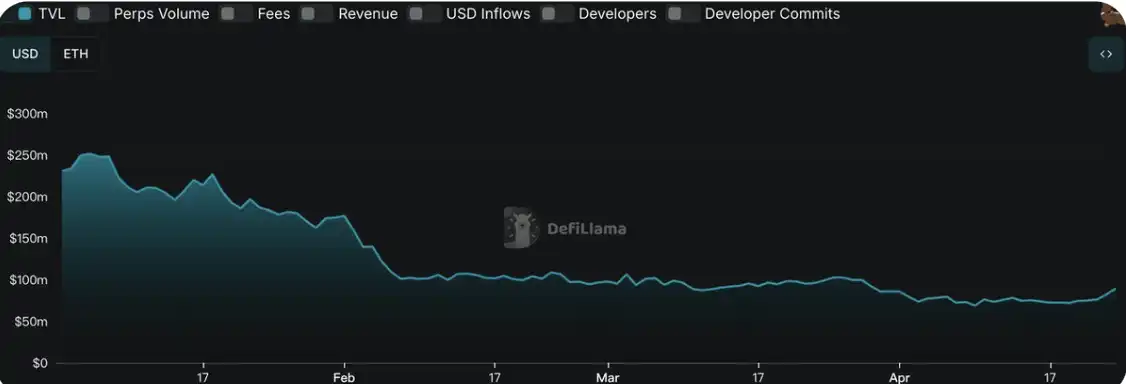
Synthetix's TVL situation (Data Source: https://defillama.com/protocol/synthetix#information)
Bearish Targets: REZ, OMNI
REZ: 8.64% Token Unlocking Under Low Restaking Background May Trigger Concentrated Selling by Investment Institutions and Teams
Renzo is a liquidity restaking protocol based on the EigenLayer ecosystem, aimed at simplifying complex staking mechanisms for end users and facilitating rapid collaboration with EigenLayer node operators and Active Validation Services (AVS). Due to the recent poor performance of the Ethereum ecosystem and the continued low price of ETH, the staking rate of ETH has also declined, leading to a loss of market attention for restaking projects. On April 30, 864 million REZ tokens will be unlocked, accounting for 8.64% of the total locked amount, with the current total circulation rate at only 21%. The linear unlocking chart published in its white paper indicates that the main recipients of this unlocking are investment institutions and project teams. Given the current low popularity of restaking projects and the poor performance of the Ethereum ecosystem, this large unlocking may trigger significant selling, impacting the price of REZ tokens.
OMNI: Large Token Unlocking Approaches, Market Selling Risks Intensify
Omni is an interoperability layer for Ethereum, establishing low-latency communication between all Ethereum Rollups, allowing Ethereum to operate as a cohesive system in the modular era. Omni itself is also a public chain project. Due to the ongoing downturn in the Ethereum ecosystem and the poor performance of various Layer-2 projects in this round, Omni, as a linking project between different Layer-2s, has also lost its value. On May 2, 16.63 million OMNI tokens will be unlocked, accounting for 16.64% of the total locked amount, while the current circulation rate is only 19%, effectively doubling the existing circulating token amount. The linear unlocking chart published in its white paper shows that the main recipients of this unlocking are investment institutions and project teams. Additionally, due to the current low popularity of Omni, this large unlocking may lead to significant selling, thereby affecting the price of OMNI tokens.
Market Sentiment Index Analysis
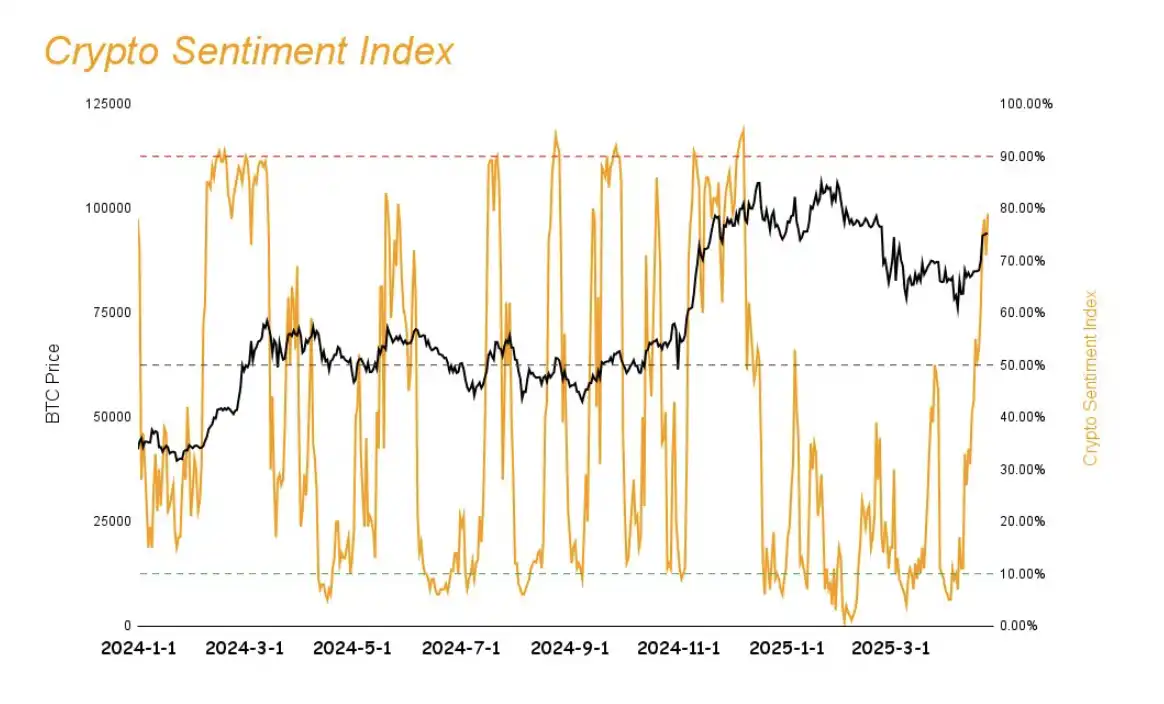
The market sentiment index has risen from 55% last week to 79%, entering a bullish zone overall.
Hot Tracks
MCP: Can It Lead the Future Development Direction of Crypto✖️AI?
Current Situation
MCP stands for Model Context Protocol, launched by Anthropic on November 25, 2024. After its launch, it did not receive market enthusiasm. Following the impact of Deepseek on existing AI software, the market began to gradually pay attention to the issues of optimizing algorithms and resource scheduling, changing the previous development approach of AI relying on accumulated computing power. As a result, the idea of standardizing how external data and applications interact with large language models (LLMs) through MCP has gained increasing market attention.
Recently, with the good performance of the MCP-related token Dark on the Solana chain after its launch on Binance Alpha, investors in the market have begun to show enthusiasm for MCP-related tokens, making MCP one of the few concentrated hot tracks recently.
Concept of MCP
The Model Context Protocol (MCP) is an open-source standard launched by Anthropic, initially as an extension of the Claude ecosystem, aimed at addressing the fragmentation of interactions between AI models and external tools and data. MCP has now evolved into a secure and standardized way for AI agents driven by large language models to interact with external systems to obtain real-time data. In practical use, MCP can act as a universal adapter, allowing AI to access content repositories, business tools, and development environments.
The core goal of MCP is to enhance efficiency through standardized processes, shifting AI agents from "understanding" to "doing," providing developers with efficient tools, and enabling businesses and non-technical users to easily customize their own agents. In this way, MCP can become a bridge connecting virtual intelligence with the real world, thereby promoting personalized innovation and development across various industries.
How MCP Works and Its Technology
MCP Technology
The technical foundation of MCP is JSON-RPC 2.0, a lightweight and efficient communication standard that supports real-time bidirectional interaction, similar to the high performance of WebSockets. It operates through a client-server architecture:
· MCP Host: The application for user interaction, such as Claude Desktop, Cursor, or Windsurf, responsible for receiving requests and displaying results.
· MCP Client: Embedded within the host, establishing a one-to-one connection with the server, handling protocol communication, and ensuring isolation and security.
· MCP Server: A lightweight program that provides specific functions, connecting to local (e.g., desktop files) or remote (e.g., cloud API) data sources.
Transmission methods include:
· Stdio: Standard input/output, suitable for local rapid deployment, such as file management, with latency as low as milliseconds.
· HTTP SSE: Server-sent events, supporting remote real-time interaction, such as cloud API calls, suitable for distributed scenarios.
How It Works
MCP employs a client-server architecture, simply put, when the MCP host wants to retrieve data or perform operations, it needs to communicate and collaborate through the MCP client and MCP server. To ensure efficiency and security, MCP assigns a dedicated client to each server, forming a one-to-one isolated connection. Its core components include:
· Host: User entry point, such as Claude Desktop, responsible for initiating requests and displaying results, serving as the "face" of interaction.
· Client: Communication intermediary, interacting with the server using JSON-RPC 2.0, managing requests and responses, ensuring isolation.
· Server: Function provider, connecting to external resources and executing tasks, such as reading files or calling APIs.
Transmission methods are flexible and diverse:
· Stdio: Local deployment, suitable for quick access to desktop files or local databases, with latency as low as milliseconds.
· HTTP SSE: Remote interaction, supporting cloud API calls, with strong real-time capabilities.
Advantages of MCP
MCP addresses the challenges faced in current AI applications through standardized interfaces:
· Real-time Access: AI can obtain the latest data in a very short time.
· Security and Control: Direct access to data avoids intermediate storage, with permission management reliability reaching 98%, allowing users to restrict AI to access only specific files.
· Low Computational Load: No need to embed vectors, reducing computational costs by about 70%.
· Flexibility and Scalability: The number of connections has decreased from the traditional 100 million to 20,000, greatly simplifying the configuration process.
· Interoperability: One MCP server can be reused by multiple models.
· Vendor Flexibility: Switching LLMs does not require infrastructure reconstruction, similar to USB-C compatibility.
· Autonomous Agent Support: Supports AI's dynamic access to tools for executing complex tasks.
MCP Ecosystem Projects
Dark
Dark is an experimental MCP network based on Solana, focusing on Trusted Execution Environments (TEE). By automatically integrating new tools and on-chain interactions, Dark aims to achieve innovation in decentralized technology. However, most project functions have not yet been launched, and it is currently in the concept stage, having already issued tokens, with the token being DARK.
SkyAI
SkyAI is a native AI infrastructure based on the BNB Chain, providing multi-chain data access and AI agent deployment. The project is still in the concept stage, and the actual product has not yet been launched. Tokens have been issued, with the token being SKYAI. It has a market capitalization of 43 million dollars, making it a leading project in the MCP track.
Solix
Solix is a DePIN network that adopts MCP, focusing on smart bandwidth sharing. Users can share bandwidth through a browser extension and earn rewards, covering 63 countries worldwide. The project has a relatively fast technological implementation but needs to verify user participation and the sustainability of its economic model. The project has not yet issued tokens.
HighKey
HighKey is a DeFAI project compatible with MCP and DARP protocols, focusing on DeFi arbitrage and professional analysis. Tokens have been issued, with the token being HIGHKEY, which has a small market capitalization of only 5.68 million dollars. The project has clear development functions but still needs to improve user experience and differentiation.
DeMCP
DeMCP is a decentralized MCP project focusing on trust and security, providing SSE proxy services. It has not yet issued tokens and is still in the development stage, needing to demonstrate actual products.
UnifAI
UnifAI is a DeFAI project that provides on-chain and off-chain task execution capabilities. Its flagship product, UniQ, simplifies complex on-chain operations. Although it has not issued tokens, it has launched a points program.
Future Development Direction
Currently, Web3 AI projects based on the MCP protocol are mostly in the early stages of development, with substantial products yet to be released, although some have already issued tokens. Despite MCP being an emerging hot track in the AI sub-sector at this stage, given the previous failures in the AI Agent track, caution is still needed regarding whether MCP track projects are merely fleeting AI meme asset issuances or if they can truly produce products that drive the development of the AI sector. Therefore, the future development direction of MCP should primarily focus on the implementation and application of decentralized technology. With the rapid development of AI and blockchain technology, MCP will continue to optimize its technical architecture to support more efficient computing and data sharing. Additionally, MCP will strive to enhance interoperability, simplify the usage process for developers, and promote the popularization of decentralized applications.
Overall Market Overview of Themes
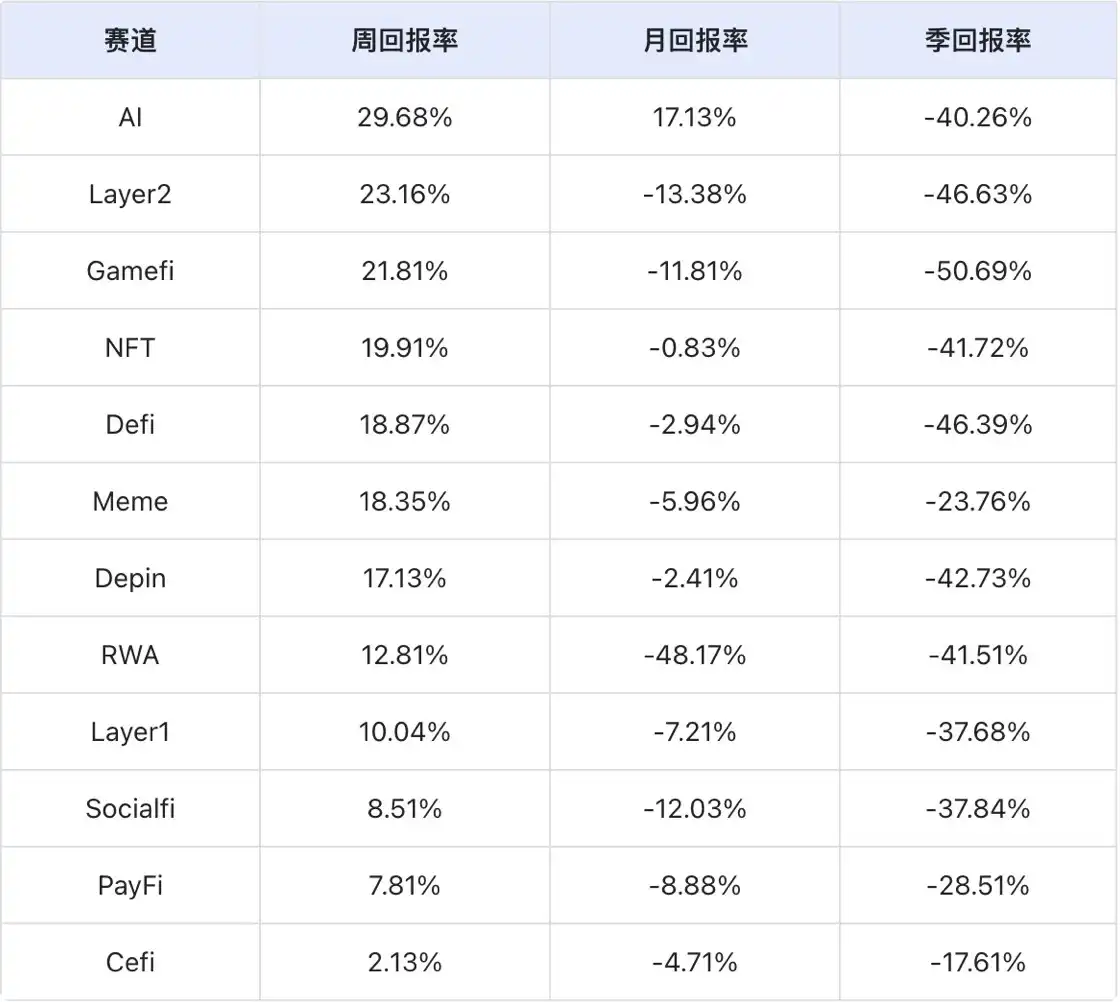
Data Source: SoSoValue
According to weekly return rate statistics, the AI track performed the best, while the CeFi track performed the worst.
AI Track: In the AI track, TAO, RENDER, FET, WLD, and FARTCOIN account for a significant proportion, totaling 86.32%. Their respective increases this week are 50.96%, 18.93%, 53.36%, 33.58%, and 29.95%, with average increases higher than those of projects in other tracks, making the AI track perform the best.
CeFi Track: In the CeFi track, BNB, BGB, and OKB account for a significant proportion, totaling 89.97%. Their respective increases this week are 2.35%, 2.51%, and 2.29%, with average increases lower than those of projects in other tracks, resulting in the CeFi track performing the worst.
Next Week's Major Crypto Events Preview
Wednesday (April 30): U.S. Q1 Real GDP Annualized Quarterly Rate Revision; U.S. March Core PCE Price Index Year-on-Year; U.S. April ADP Employment Change
Thursday (May 1): U.S. April ISM Manufacturing PMI
Friday (May 2): U.S. April Adjusted Non-Farm Payrolls; U.S. April Unemployment Rate
Summary
This week, the cryptocurrency market experienced a significant upward trend, with market sentiment shifting from a sluggish state to a positive one. This change was primarily influenced by the easing of U.S. policies and the new SEC chairman's friendly attitude towards the crypto industry. As the policy environment changes, investor confidence in the market gradually recovers, leading to capital inflows into the cryptocurrency market and driving prices up. However, the market still needs to be cautious of the uncertainties surrounding economic recession and tariff policies, which may continue to affect market trends. While investors enjoy market growth, they should also remain vigilant to cope with potential volatility.
Projects like Solana and Synthetix show signs of recovery potential, particularly with positive progress in technological upgrades and community support. The accelerated development of Solana and the innovative initiatives of Synthetix have attracted more investor attention, and these projects are expected to continue expanding their market influence in 2025. However, projects like Omni face selling pressure from token unlocks, which may negatively impact their prices. Investors should make reasonable allocations based on the specific circumstances of the projects and the market environment to mitigate potential risks.
Although the overall industry trend is currently positive, the market still faces uncertainties related to the impending economic recession and tariffs in the U.S. Therefore, this week's increase can only be seen as a rebound from the previous excessive decline, rather than a reversal of market conditions. Next week, several macroeconomic data releases are expected, including:
· U.S. Q1 Real GDP Annualized Quarterly Rate Revision;
· U.S. March Core PCE Price Index Year-on-Year;
· U.S. April ADP Employment Change; U.S. April ISM Manufacturing PMI;
· U.S. April Adjusted Non-Farm Payrolls; U.S. April Unemployment Rate.
These data points can all influence future market trends, and it is recommended that investors maintain moderate positions and manage risks effectively, waiting for clearer policies, which will be the best strategy to cope with the current market.
This article is from a submission and does not represent the views of BlockBeats.
免责声明:本文章仅代表作者个人观点,不代表本平台的立场和观点。本文章仅供信息分享,不构成对任何人的任何投资建议。用户与作者之间的任何争议,与本平台无关。如网页中刊载的文章或图片涉及侵权,请提供相关的权利证明和身份证明发送邮件到support@aicoin.com,本平台相关工作人员将会进行核查。



